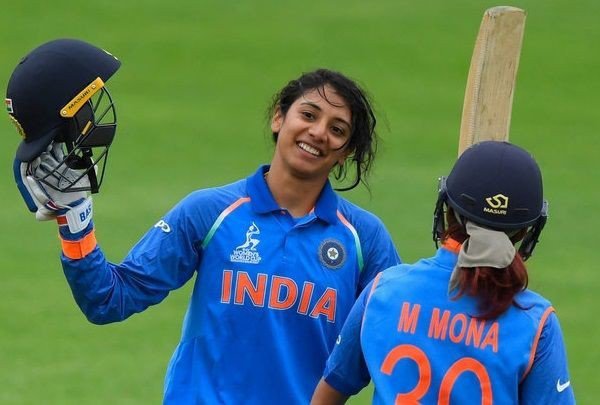Women’s cricket has experienced a remarkable transformation over the past few decades, evolving from relative obscurity to a vibrant and competitive sport. This rise has been marked by breaking barriers, setting new records, and making history, all while inspiring millions around the world. In this blog, we explore the journey of women’s cricket, highlighting key milestones, challenges, and the trailblazers who have shaped the game.
Early Beginnings
The origins of women’s cricket can be traced back to the late 18th century, with the first recorded match taking place in England in 1745. Despite this early start, women’s cricket remained a peripheral activity for many years, largely overshadowed by the men’s game. It wasn’t until the early 20th century that organized women’s cricket began to take shape, with the formation of women’s cricket clubs and associations.
Formation of International Bodies
The establishment of the Women’s Cricket Association (WCA) in England in 1926 was a pivotal moment in the history of the sport. This organization laid the groundwork for the development of women’s cricket, organizing domestic competitions and international tours. The first Women’s Test match was played in 1934 between England and Australia, marking the beginning of international women’s cricket.
In 1958, the International Women’s Cricket Council (IWCC) was formed to coordinate and promote the sport globally. The IWCC played a crucial role in expanding the reach of women’s cricket, leading to the inclusion of more countries in international competitions.
Breakthrough Moments


The 1970s and 1980s were decades of significant progress for women’s cricket. The inaugural Women’s Cricket World Cup was held in 1973, two years before the first men’s World Cup, showcasing the growing popularity of the sport. England emerged as the champions, defeating Australia in the final.
One of the most iconic moments in women’s cricket came in 1982 when Australia won the World Cup on home soil. This victory not only boosted the profile of the sport in Australia but also inspired a new generation of female cricketers worldwide.
Bonus:- Greatest Cricket Matches of All Time: An In-Depth Analysis
Professionalism and Increased Visibility
The 21st century has seen unprecedented growth and professionalization in women’s cricket. The International Cricket Council (ICC) took over the administration of women’s cricket in 2005, leading to better resources, more organized competitions, and increased visibility.
T20 cricket has played a crucial role in popularizing women’s cricket. The inaugural ICC Women’s T20 World Cup in 2009 provided a platform for showcasing the talents of female cricketers in a fast-paced and entertaining format. The tournament has grown in stature and viewership, with the 2020 edition, held in Australia, breaking attendance records and drawing millions of viewers worldwide.
Breaking Barriers and Setting Records
Women’s cricket has seen numerous records and milestones being set in recent years. In 2017, the ICC Women’s Cricket World Cup final at Lord’s saw a record attendance of over 26,000 spectators, with millions more watching on television. The match, in which England triumphed over India, was a watershed moment, demonstrating the immense potential and popularity of women’s cricket.
Trailblazing cricketers like Mithali Raj, Ellyse Perry, and Meg Lanning have become household names, breaking records and inspiring young girls to take up the sport. Mithali Raj, for instance, is the highest run-scorer in women’s ODIs, while Ellyse Perry has excelled as both a batter and a bowler, setting new standards of excellence. These women’s cricket legends have paved the way for future stars.
Overcoming Challenges
Despite the progress, women’s cricket has faced numerous challenges, including gender bias, lack of funding, and limited media coverage. However, the resilience and determination of female cricketers and administrators have driven the sport forward. The fight for equal pay and better facilities continues, with significant strides being made in recent years.
The introduction of professional contracts for women cricketers in several countries, including Australia, England, and India, has been a game-changer. These contracts have provided financial stability and allowed players to focus entirely on their game, leading to improved performances and greater competitiveness. This shift towards professional women’s cricket has been instrumental in the sport’s growth.
The Future of Women’s Cricket


The future of women’s cricket looks incredibly promising. With increasing investment, better infrastructure, and growing fan support, the sport is set to reach new heights. The ICC has outlined ambitious plans to expand women’s cricket, including the introduction of more teams in global tournaments and the promotion of the sport in non-traditional cricketing nations.
Grassroots initiatives and development programs are also playing a vital role in nurturing young talent. Efforts to make cricket more accessible and inclusive are paving the way for a more diverse and competitive landscape. The continued evolution of women’s cricket will undoubtedly inspire new generations.
Conclusion
The rise of women’s cricket is a testament to the hard work, passion, and perseverance of countless individuals who have broken barriers and made history. From its humble beginnings to the grand stages of World Cups and T20 leagues, women’s cricket has come a long way. As the sport continues to grow and evolve, it promises to inspire future generations and leave an indelible mark on the world of cricket.
